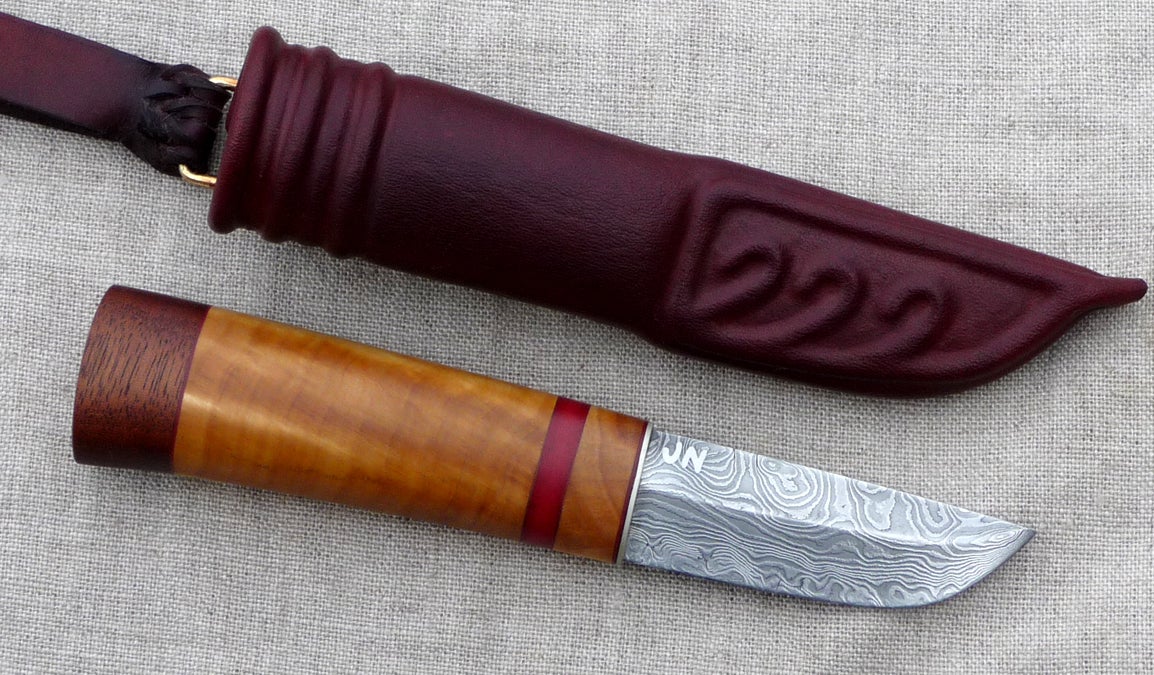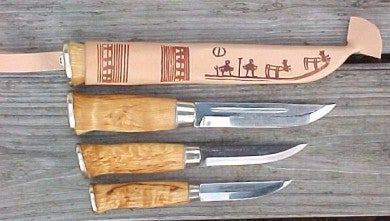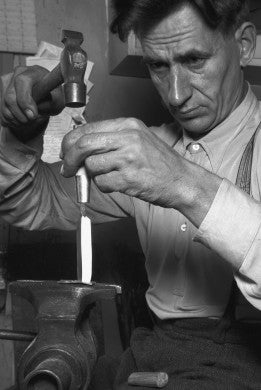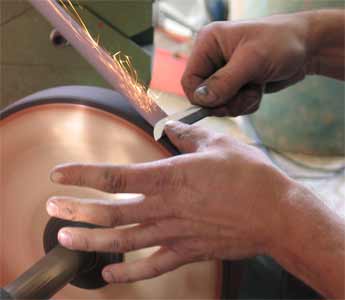EDC History: Puukko
Ashley 06.07.14

In modern times, knives dubbed as “outdoor” tools tend to be more tactical than not, favoring large, long blades and plenty of matte black finish. But for hundreds of years, Arctic cultures favored small, wood-handled skinners to help them hunt, fish, and survive in harsh landscapes. One such tool is the puukko, which, like the higonokami, is seeing a bit of a resurgence as knife enthusiasm spreads.
 The puukko is a Finnish knife, and the name lends itself to the Finnish word “puukotta,” which means “to stab/knife.” The prefix, “puu” means “wood” in Finnish. The design of the puukko is attributed to the indigenous Sami people, who created several knives to use for day to day tasks; the puukko was the smaller option, used to skin fish or animals. Although historical records vary, the puukko dates back about 1000 years. Both men and women carried (and carry) puukkos, although the sizes change depending on the person, as the puukko handle is meant to fit the hand size of the user.
The puukko is a Finnish knife, and the name lends itself to the Finnish word “puukotta,” which means “to stab/knife.” The prefix, “puu” means “wood” in Finnish. The design of the puukko is attributed to the indigenous Sami people, who created several knives to use for day to day tasks; the puukko was the smaller option, used to skin fish or animals. Although historical records vary, the puukko dates back about 1000 years. Both men and women carried (and carry) puukkos, although the sizes change depending on the person, as the puukko handle is meant to fit the hand size of the user.
But puukkos have served as far more than just cooking tools. Puukkos have become a beloved tool worldwide, and as such are considered a point of pride for Finnish people. Young boy and girl scouts in Finland receive puukko knives as gifts for their accomplishments, and the gift is seen as an honor. However, the knives are technically illegal to carry openly in Finland, although that seems to be more of a formality than an enforced law depending on who you talk to. It’s also the only civilian item a Finnish soldier can openly wear.

A famous epic Finnish poem called The Kalevala is said to tell the origins of the puukko. You can read the entire portion about the puukko here, but here’s an excerpt:
A wolf ran along the marsh,
bear wandered in from the heath,
The marsh stirred where the wolf stepped,
the heath where the bear set its paws.There bog-iron came to the surface,
and a steel ingot grew
in the print of the wolf’s claws,
in the mark of the bear’s heel.
From Bushcraft to Battle
In the early 20th century, as tensions arose in Europe eventually leading to the World Wars, the role and reputation of the puukko began to change. What was once a classic household tool became a popular street weapon of choice in countries throughout the region then known as the Russian Empire. As such, the puukko was outlawed, which led to the design and development of Russian fixed blades intended to be used as weapons. However, the original puukko design was never intended to be anything but a woodcraft tool.
During the Winter War between Russia and Finland, soldiers relied on the puukko when ammunition was depleted. PBS documentary Fire and Ice: The Winter War shares that the puukko was used for close fighting because the blades hold an edge, and the knives are made with materials found in the environment.
The knife has since come full circle, as it’s now been reclaimed as a woodcraft knife by people around the world. But the knowledge of the knife’s role as a combat knife makes its history just a bit more compelling.
Design and Materials
The puukko is a simpler alternative to modern bushcraft products. Although there are many inexpensive puukkos for sale online, many don’t consider them legitimate unless they are actually made in Scandinavia, and more so if they are made in Finland given the knife’s legacy.
A traditional puukko is a simple-looking knife, with a thick, round handle the same width as the blade. The iconic blade has a straight spine and a wide, curved edge. When we talked to Norwegian knifemaker Helle Knives at SHOT Show, they said that puukkos and other Scandinavian knives are typically made with curly birch handles. Curly birch is native to Scandinavia and Russia and has a distinct look when carved and treated. It also makes the handle feel both plush but sturdy.
Blade materials can vary from the three-layer approach, which combines strong and flexible steels, to damascus-style or composite designs. Most are made with Finnish steel, Ovako 100Cr6, which is equivalent to U.S 52100 bearing steel according to Nordic knife blog Nordiska Knivar.
 Where to Get One
Where to Get One
Travelers to Finland will likely encounter an abundance of puukkos for sale, as collector demand has created a growing market for authentic Finnish knives. Be sure to inquire about the manufacturing process and location before purchasing a souvenir puukko. There are also plenty of great websites that sell beautiful puukkos, including Helle, Pukko Tuominen, or Iisakkipää Järvenpää. For some custom puukkos, knifemaker Jarkko Niskanen posts his creations on his Deviantart page. (Some of those pages are in Finnish but can be translated in Google.)
So whether you’re a new or longtime puukko owner, this seemingly simple knife offers more than meets the eye. You’re using a tool that dates back 1,000 years and is so beloved that it’s still used today. A puukko is a must-have knife for any collection.
